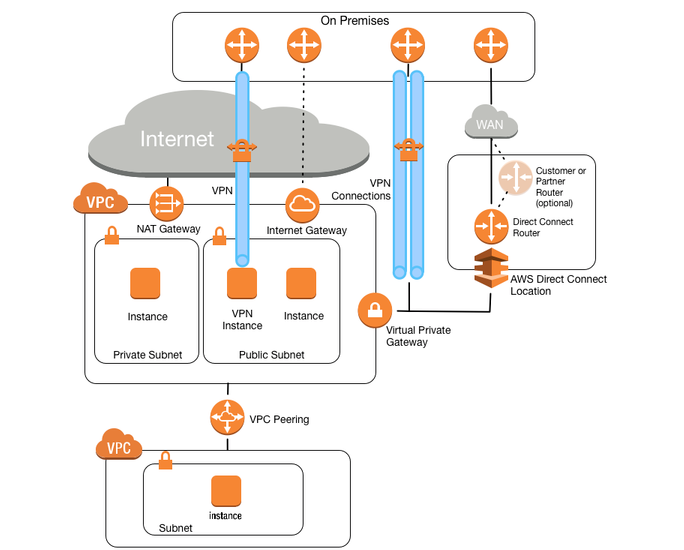Preserving Connectivity to Legacy Applications
Question
A new client may use your company to replicate all their existing Data Center applications and infrastructure to AWS.
This is going to be a huge contract for your company, and you have been handed the entire contract and need to provide an initial scope to this possible new client.
One of the things you notice concerning the existing infrastructure is that it has a small amount of legacy applications that you are almost certain will not work on AWS.
Which of the following would be the best strategy to still preserve the connectivity to these legacy applications? Choose the correct answer from the options below.
Answers
Explanations
Click on the arrows to vote for the correct answer
A. B. C. D.Answer - C.
The best option is to have a dual mode wherein you have the legacy apps running on-premise and start replicating the apps which have compatibility in the cloud.
Have a VPN connection from the on-premise to the cloud for ensuring communication can happen from each environment to the other.
For the full fundamentals on AWS networking options, please visit the URL:
https://aws.amazon.com/blogs/apn/amazon-vpc-for-on-premises-network-engineers-part-one/
The best strategy to preserve connectivity to legacy applications that are almost certain not to work on AWS is to create a hybrid cloud by configuring a VPN tunnel to the on-premises location of the Data Center. Option C is the correct answer.
Explanation:
A hybrid cloud is a cloud computing environment that combines a public cloud and a private cloud by allowing data and applications to be shared between them. In this scenario, the on-premises data center is the private cloud, and AWS is the public cloud.
Configuring a VPN tunnel to the on-premises location of the Data Center would enable secure communication between the legacy applications in the on-premises data center and the applications running in AWS. The VPN tunnel provides a secure and encrypted connection over the internet between the two locations. This way, the legacy applications can continue to function while the rest of the applications are migrated to AWS.
Option A, creating two VPCs, is not the best strategy because it would require the creation of a VPC peering connection, which would not provide a secure and encrypted connection between the two VPCs.
Option B, moving the legacy applications onto AWS first, before building any infrastructure, is not a good strategy because it assumes that there is an AWS Machine Image that can run the legacy application, which may not be the case. It is best to evaluate the application's compatibility with AWS before deciding to move it.
Option D, convincing the client to look for another solution by decommissioning these applications and seeking out new ones that will run on AWS, is not a good strategy because it is not always possible to find new applications that can replace the legacy ones. Moreover, the cost and time associated with finding and implementing new applications may be prohibitive.
